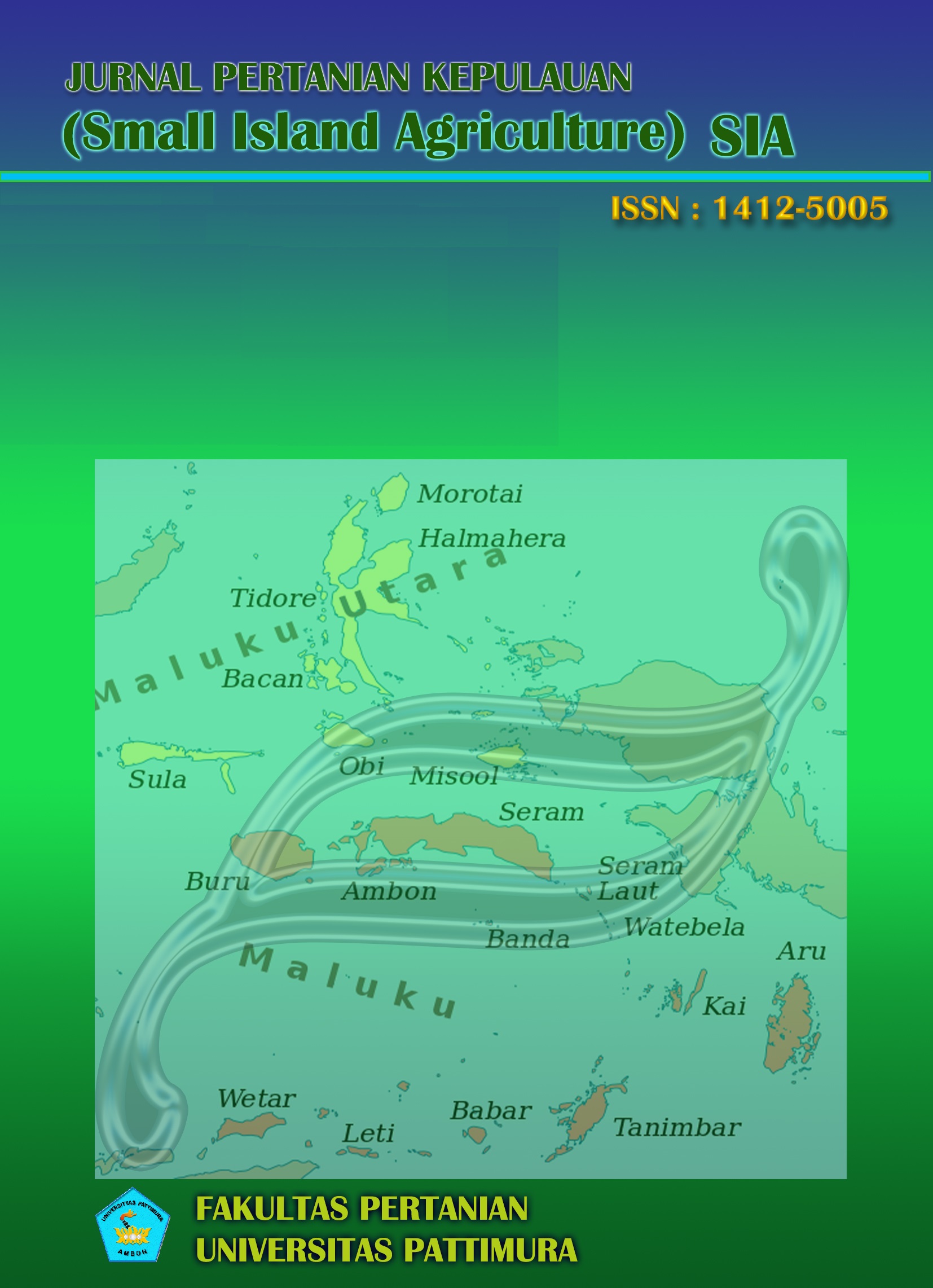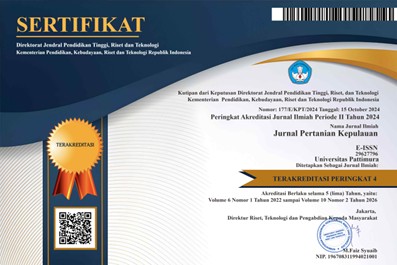Karakteristik GC-MS Minyak Kayu Manis Asal Pulau Banda
Abstract
Cinnamon is one of the essential oil-producing plants originating from the Maluku islands, potentially developing into a commercial product. This study aims to determine the level of yield of cinnamon essential oil from Banda island, the number of components that make up the essential oil, and analyze the quality of essential oils based on the percentage of cinnamaldehyde content. Cinnamon samples were taken in Banda with three sublocations, (Tanah Rata, Boiyouw, and Mangkobatu). At each location, 3 kg of cinnamon bark samples were taken, then distilled for approximately 5 hours by steam distillation method using a 4-kg boiler. The essential oil obtained was then analyzed using the gas chromatography-mass spectrometry (GC-MS) method. The volatile oil variables studied included the percentage of oil content or yield, specific gravity, condensate volume, number of components of volatile compounds, and cinnamaldehyde content. Organoleptic test was conducted to assess the quality/aroma of distilled cinnamon oil (with a Likert score). The results showed that the highest essential oil yield was obtained from cinnamon from Banda, Boiyouw location, which was 0.66%, and the lowest was at Tanah Rata. The highest density was obtained in Banda cinnamon oil at the Boiyouw location, namely 0.94; Mangkobatu location is 0.89 and the lowest is at Tanah Rata location is 0.79. The results also showed that there were 21 volatile components in Banda cinnamon oil at the Boiyouw location. In addition, the cinnamaldehyde content was found to be 20.61% in Banda cinnamon at the Boiyouw location. In general, it can be concluded that Maluku cinnamon essential oil is still below the quality standard of SNI 06-3734-2006
Downloads
References
CABI. (2019). Cinnamomum burmanni (Padang Cassia). In Cabi (Ed.), Compendium.
Hüsnü, K., Başer, C., & Demirci, F. (2007). Flavours And Fragrances. In Chemistry of Essential Oils (Pp. 43–86).
http://id.wikipedia.org/kulit.kayu_manis. Kulit kayu manis, diakses tanggal 16 Agustus 2021.
Kurniawati, N. (2010). Sehat & Cantik Alami Berkat: Khasiat Bumbu Dapur. Qanita.
Ma’mun. (2006). Karakteristik Beberapa Minyak Atsiri Famili Zingiberaceae Dalam Perdagangan. Buletin Littro, Xvii(2), 91–98.
Sundari, E. (2002). Pengambilan Minyak Atsiri Dan Pleoresin Dari Kulit Kayu Manis. . Institut Teknologi Bandung.
Wangsa, R. N. S. (2007). Status Dan Potensi Pasar Kayu Manis Organik Nasional Dan Internasional, . In Aliansi Organis Indonesia, Bogor.
Widyanto, I., Anandito, B. K., & Khasanah, L. U. (2012). Ekstraksi Oleoresin Kayu Manis (Cinnamomum Burmannii) : Optimasi Rendemen Dan Pengujian Karakteristik Mutu. Teknologi Hasil Pertanian, Vi(1), 7–15.
Yuliarto, F. T., Khasanah, L. U., & Anandito, B. K. (2012). Pengaruh Ukuran Bahan Dan Metode Destilasi (Destilasi Air Dan Destilasi Uap-Air) Terhadap Kualitas Minyak Atsiri Kulit Kayu Manis (Cinnamomum Burmannii). Jurnal Teknosains Pangan , 1(1), 12–23.





.png)


